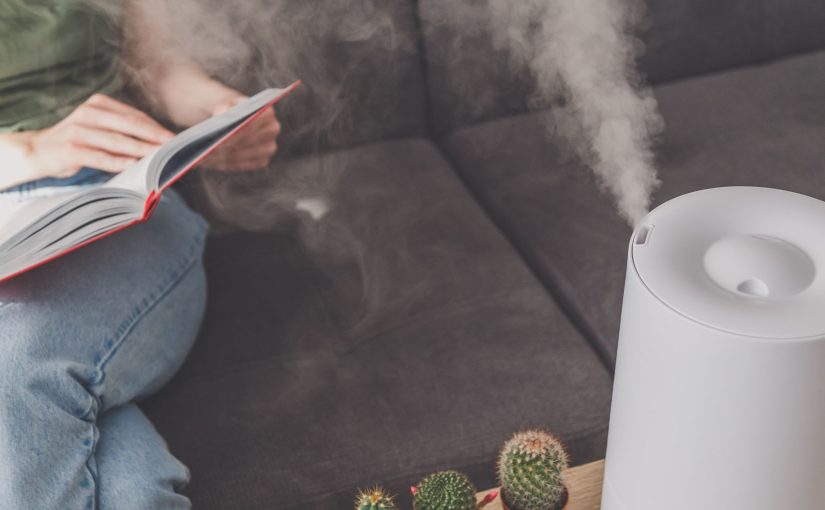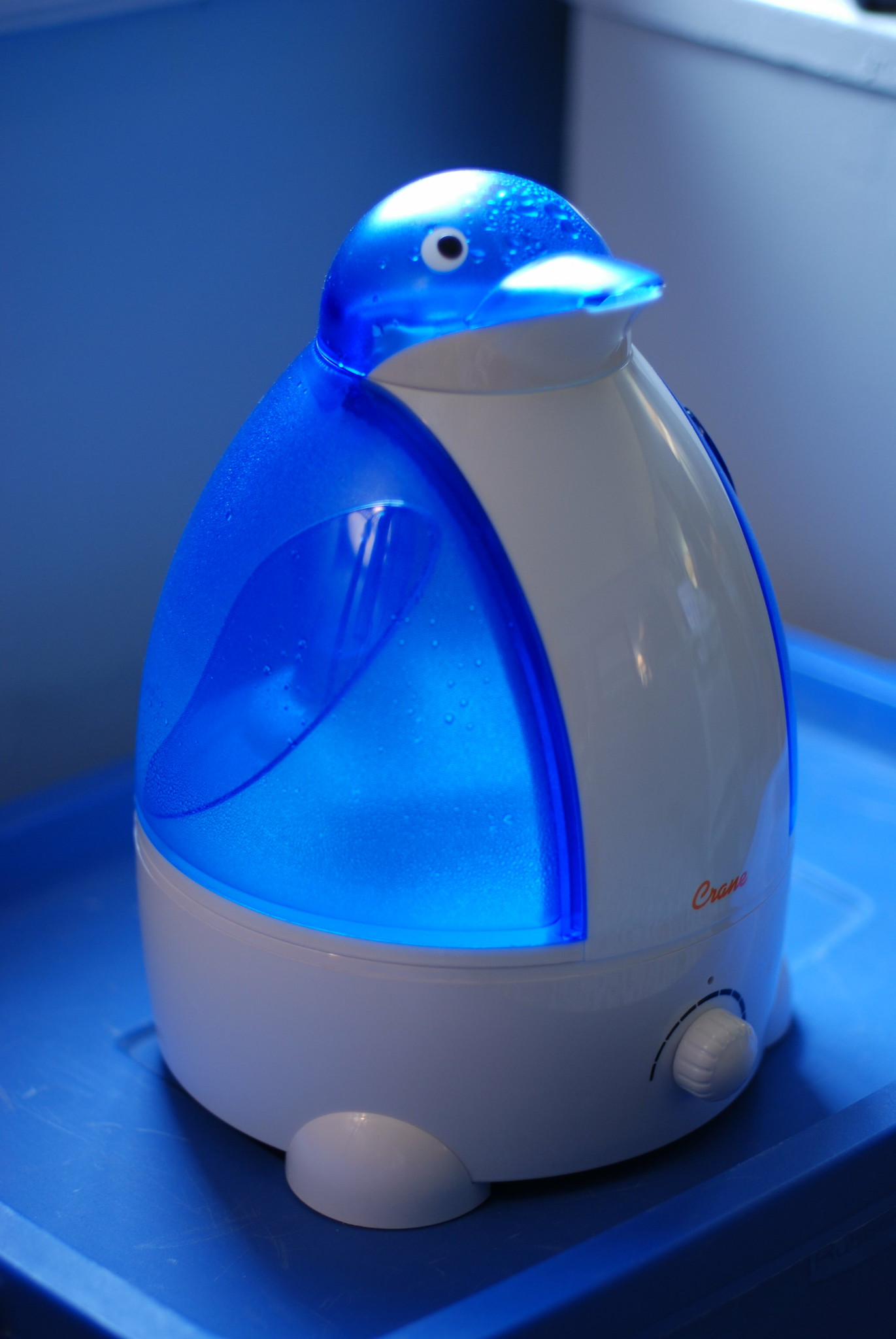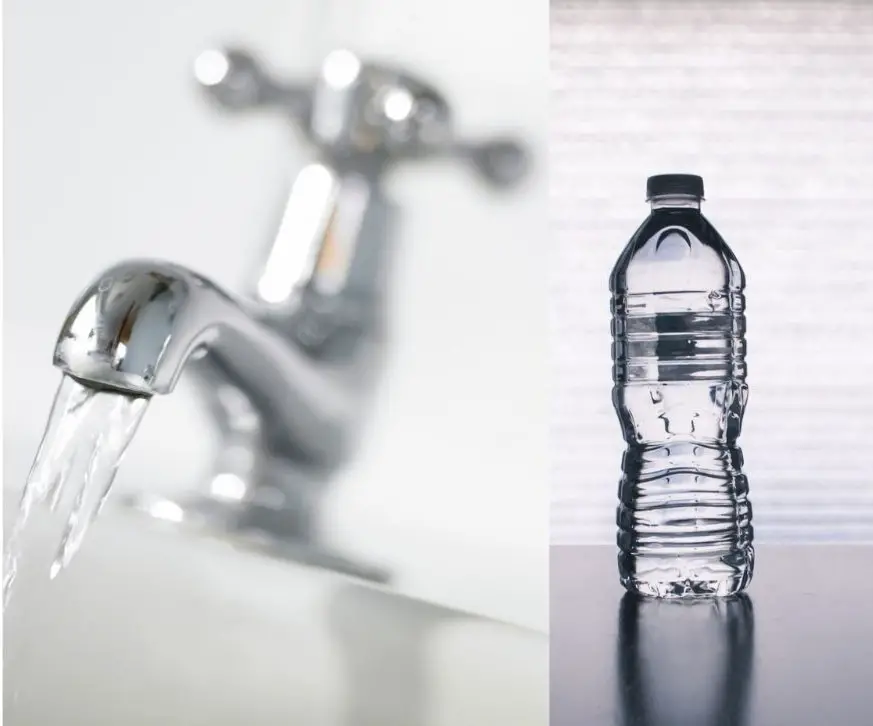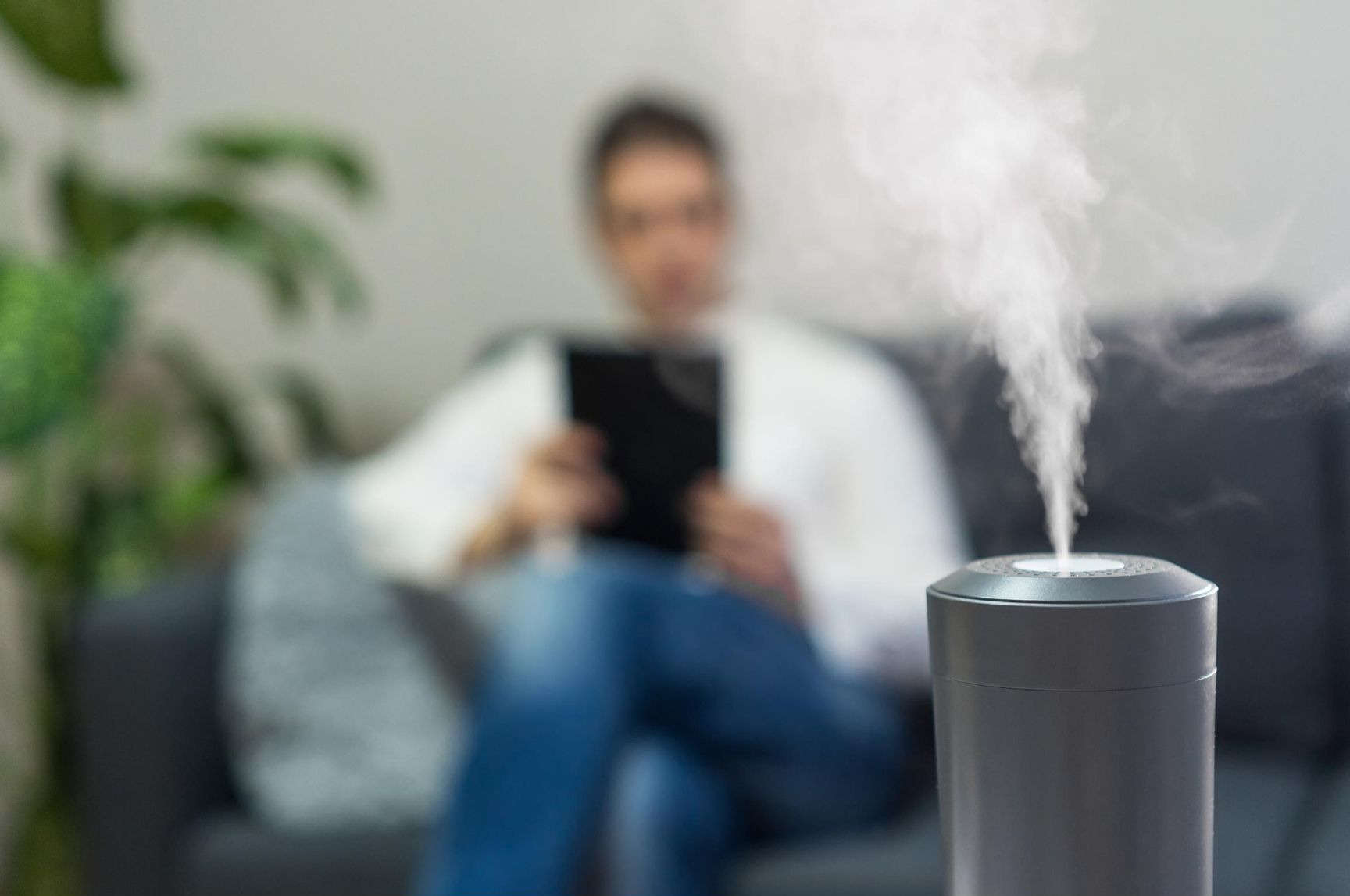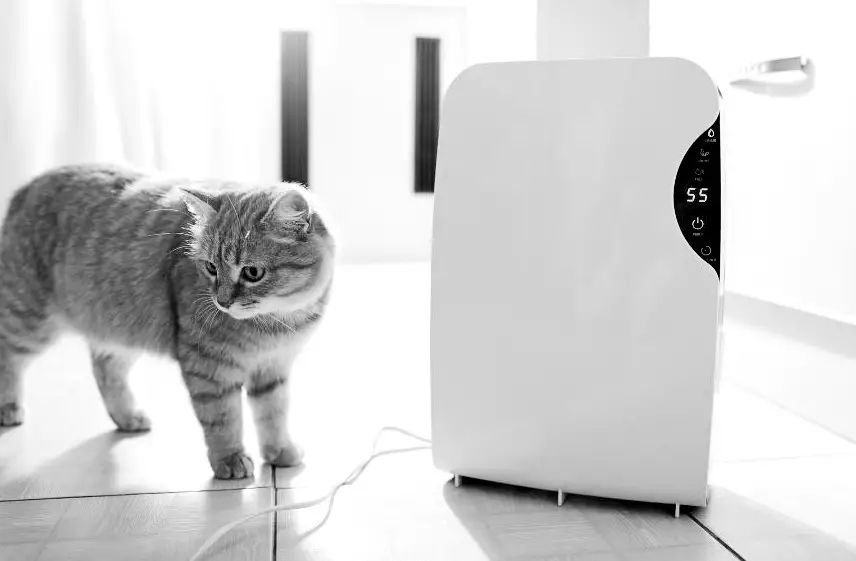Table of Contents
Why Your Humidifier is Not Misting
 A humidifier not misting properly is often caused by a clogged nozzle or filter that needs cleaning. Mineral deposits and dust can build up in the humidifier and prevent it from releasing moisture into the air. Fortunately, troubleshooting a non-misting humidifier is usually an easy fix.
A humidifier not misting properly is often caused by a clogged nozzle or filter that needs cleaning. Mineral deposits and dust can build up in the humidifier and prevent it from releasing moisture into the air. Fortunately, troubleshooting a non-misting humidifier is usually an easy fix.
Introduction
If you’re like me, you don’t really think about using a humidifier till You’ve already got a crusty or bloody nose. I tend to want to just pull out the humidifier, add some water and go. But that usually ends up with me having some problem that I wasn’t thinking about like the humidifier being gunked up from the last time i used it,
And that’s how this article came about. The last time I pulled out the humidifier and plugged it in, I wasn’t getting too much of a result at all because it just didn’t seem to be misting right. If you find yourself in the same kind of situation, I invite you to read on.
Here are solutions for a humidifier not misting along with 7 other common humidifier troubles.
| Common Problem | Possible Causes | Solutions |
|---|---|---|
| Not Misting | Clogged nozzle/filter, Empty water tank, Mist control off, Low water sensor, Burnt out heating element | Clean nozzle/filter, Refill water tank, Turn on mist control, Check water sensor, Replace heating element |
| Misting But Not Humidifying | Room too large, Not enough water, Leaking moisture, Humidistat set low, Dry air entering | Use in smaller room or get larger humidifier, Refill water tank, Check for leaks and seal, Adjust humidistat, Weather-strip windows/doors |
| White Dust Around Humidifier | Mineral deposits from water | Clean unit, Change filters, Use distilled/demineralized water |
| Mold and Mildew | Lack of cleaning, Stagnant water | Regular cleaning and disinfecting, Use distilled water, Ensure proper drainage, Dry out unit between uses |
| Strange Odors | Bacterial/mold buildup | Clean and disinfect tank and filters, Replace filters, Use cleaning solutions, Clean with vinegar/water, Add essential oils |
| Leaking Water | Worn seals, Cracked tank, Mineral deposits, Overfilled | Replace seals/gaskets, Replace tank, Clean deposits, Ensure proper fill level |
| Noisy Humidifier | Dirty filter, Loose parts, Fan hitting housing, Damaged components | Clean filter, Tighten or adjust parts, Adjust fan or shroud, Replace damaged parts |
| Won’t Turn On | Loose plug connection, Power switch off, Blown fuse, Electrical issue | Check and secure plug, Turn switch on, Replace fuse, Try different outlet |
1. Humidifier is Not Misting at All
If your humidifier is not releasing any mist, there are a few likely culprits:
- Clogged nozzle/filter – Mineral deposits and dust can obstruct the misting nozzle or filters.
Solution: Clean them thoroughly. - Empty water tank – Ensure the tank is filled with water. Low water level can prevent misting.
- Mist control off – Make sure the mist control knob or settings are turned on.
- Low water sensor activated – Some units have a sensor that shuts off misting when water is too low.
- Burnt out heating element – Warm mist humidifiers have a heating element that can burn out after time.
This is the exact scenario that I found with my own humidifier. It was completely stopped up, I took a paper clip and and stuck it into the misters and cleaned it out. Super easy.
2. Humidifier Misting But Not Humidifying
If your humidifier is releasing mist but the room air remains dry, there are several possible issues:
- Not enough water – Double check the tank is filled to the proper level.
- Room too large – The humidifier may be undersized for a very large room.
- Leaking moisture – Check for leaks preventing moisture from exiting the nozzle.
- Humidistat set low – Make sure the humidistat is set high enough.
- Dry air entering – Consider weather-stripping windows and doors.
3. White Dust Around the Humidifier
Seeing a white powdery residue around your humidifier is caused by mineral deposits in the water. To prevent it:
- Wipe down the unit frequently to remove deposits.
- Change the filters as needed to stop dust spreading.
- Use distilled or demineralized water to minimize minerals.
4. Mold and Mildew in the Humidifier
Mold and mildew growth results from lack of cleaning and maintenance:
- Empty, clean and disinfect the tank regularly. 1
- Use distilled water to inhibit microbial growth.
- Ensure moisture can drain out rather than pool.
- Dry out the humidifier between uses.
5. Cool Mist Humidifier Not Misting
If your cool mist humidifier is not misting, it’s often due to a few common issues that are typically easy to address.
The problem could stem from a clogged nozzle or filter, where mineral deposits and dust have accumulated and are obstructing the mist outlet.
In this case, a thorough cleaning of the nozzle and filter can restore functionality. Another possibility is an empty water tank; ensure the tank is adequately filled to allow the humidifier to generate mist.
Additionally, check the mist control settings to make sure they are correctly adjusted to emit mist. Occasionally, a low water sensor might be engaged, preventing misting when the water level is too low.
6. Strange Odors from the Humidifier
Unpleasant odors are a sign of bacterial or mold buildup. To eliminate them:
- Clean and disinfect the tank and filters.
- Replace filters if cleaning doesn’t work.
- Use cleansing solutions made for humidifiers.
- Use vinegar and water solutions to clean.
- Try adding essential oils to the water.
I’ve had this happen too. I found it to be pretty common that at the end of the humidifiers season, The humidifier tends to sit where it was pulled out to for longer than it is needed.
Unfortunately that usually ends up causing mold and mildew to take root in the humidifier, which ends up being a pretty musty smell.
And though the humidifier may just be sitting there would not turned on, is someone were to come along and turn it on, The bacteria in the water would mist into the air and there would be a breathing situation.
7. Leaking Water
Several issues can cause a leaking humidifier:
- Worn seals – Replace any seals or gaskets that are cracked or damaged.
- Cracked tank – Inspect tank for cracks and replace if needed.
- Mineral deposits – Clean deposits that may prevent a tight seal.
- Overfilled – Ensure not overfilling the tank.
 8. Noisy Humidifier
8. Noisy Humidifier
Excess noise usually indicates a problem. Potential solutions include:
- Clean filter – A dirty filter can cause rumbling.
- Check parts – Ensure no loose or rubbing parts.
- Fan hitting housing – Adjust fan or shroud.
- Replace parts – Fix or replace any damaged components.
9. Humidifier Won’t Turn On
If your humidifier won’t power on, check:
- Plug connection – Make sure the cord is securely plugged in.
- Power switch – Confirm the switch is in the On position.
- Fuse – Replace any blown fuses in the unit.
- Electrical issue – Try a different outlet.
Conclusion
Identifying and troubleshooting common humidifier problems is usually a straightforward process. With regular cleaning and maintenance, you can enjoy the benefits of healthy air moisture levels and alleviate issues like static electricity, dry sinuses, cracked skin and more.
Be sure to empty and thoroughly clean your humidifier on a frequent basis. Change filters as needed to remove scale and mineral deposits. And don’t hesitate to replace any damaged or worn parts that could lead to bigger problems down the road. With a properly working humidifier, you’ll breathe easier all year long.
Also don’t be like me, clean and store your humidifier instead so letting it sit in the same place all year long. You will avoid a whole slew a problems just by taking the initiative and doing it.
Frequently Asked Questions
1. How often should I clean my humidifier?
You should clean your humidifier every 1-2 weeks. Empty the tank, wipe down all surfaces and disinfect the tank, base and filters to prevent microbial growth. Also refer to manufacturer instructions for cleaning recommendations.
2. What’s the best way to clean a humidifier?
Fill the empty tank with a 50/50 vinegar and water solution. Let soak 15-30 minutes to loosen mineral deposits. Rinse thoroughly. Disinfect with a dilute bleach solution. Rinse again until bleach smell is gone. Wipe down external surfaces with a disinfectant.
3. How do I remove stubborn mineral deposits?
For tough mineral buildup clogging mist nozzles or other parts, soak in undiluted white vinegar for 30 minutes. You can also try using citric acid powder mixed with water to dissolve stubborn deposits.
4. How do I know if my humidifier filters need replacing?
Replace filters if they become bent or damaged and are unable to fit properly. Also replace per the manufacturer’s timeframe recommendation, usually 1-2 months with regular use. If mineral deposits persist after cleaning, replacing the filter can help.
5. What humidifier setting should I use for my baby’s room?
30-50% relative humidity is recommended for baby nurseries. Use a hygrometer to monitor levels. Set your humidifier appropriately, and adjust based on your baby’s comfort and any congestion symptoms.
6. Can I add essential oils to my humidifier?
Only use essential oils made specifically for humidifiers, as the oils can damage plastic tanks. Limit to a few drops per fill. Always check for leaks after adding oils, as they can degrade rubber seals.
7. How can I troubleshoot humidifier mold issues?
Prevent mold by cleaning frequently, disinfecting the tank and using distilled water. Inspect all crevices for black mold. Clean with bleach water. Replace any parts, filters or wicks with visible mold. If the issue persists, replace the unit.

